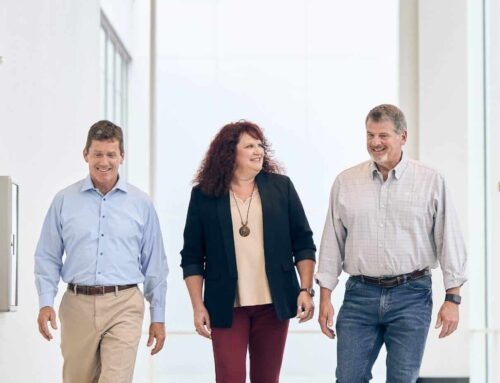Leadership in our industry means understanding the environment in which we build our products and reducing our impact on that environment through the use of sustainable materials and the application of “greener” construction methodology.
At Catalyst, we’re big on sustainability in construction, and we think it’s an important part of our business as well as the buildings we help create for our clients. Below, we’ll look at the steps we’re taking (and seeing throughout the industry) to create a more sustainable and green construction future.
Investing in Green Construction
Green construction is on the rise, and we’re only getting started. The U.S. Green Building Council provides LEED (Leadership in Energy and Environmental Design) certification for certain green building strategies. This is the most widely used system of its kind, with a global recognition that commands respect.
This green framework is crucial as we continue to focus on finding new ways to prioritize efficiency, lower costs associated with waste, water, and energy, and focus on the health and well-being of the people who will be occupying our buildings.
Breaking Through with Mass Timber
A growing trend in the construction industry is the use of mass timber for building construction. Mass timber predominantly uses wood in the composition of buildings. According to a study by the Journal of Sustainable Forestry, replacing more traditional materials like steel in the construction process with mass timber could reduce carbon dioxide emissions up to 20%. This is because the wood in mass timber buildings effectively traps carbon, while traditionally constructed buildings do not.
Minimizing Waste
When undergoing a building project, some construction waste is always going to be inevitable—it’s part of the job. But a lot of it can actually be avoided. A great way to do this is by choosing materials and suppliers during the initial phase of the project who prioritize using recycled materials in their products. Another way to minimize waste is by making it a part of your building plan. Train employees to separate and categorize waste and use this baseline as a guiding principle throughout the project.
Considering Modular Construction
Modular construction refers to utilizing a prefabricated approach to the construction process. Rather than a traditional building constructed on-site, a modular building is typically built off-site and involves building smaller units later brought to the existing construction site and assembled.
From an environmental and efficiency perspective, this approach to construction hits on three different things:
- Modular building construction wastes fewer materials as compared to traditional means.
- Modular-constructed buildings typically rely on more sustainable construction materials, including recycled resources.
- These buildings go up faster than traditionally constructed buildings, reducing energy usage at the building site.
Repurposing a Vacant Facility
We’ve written about the variety of benefits in repurposing an existing building vs new construction, and the benefits extend into sustainability as well. Termed “adaptive reuse,” these projects are completed faster than a start-from-scratch building, reduce the number of transportation needs during construction, use existing materials instead of reducing them to waste, and more.
If you value sustainability as we do and you have an upcoming construction project, contact our team. We’re more than happy to answer any questions you may have and set up a consultation to discuss how we can incorporate green initiatives into your project.





